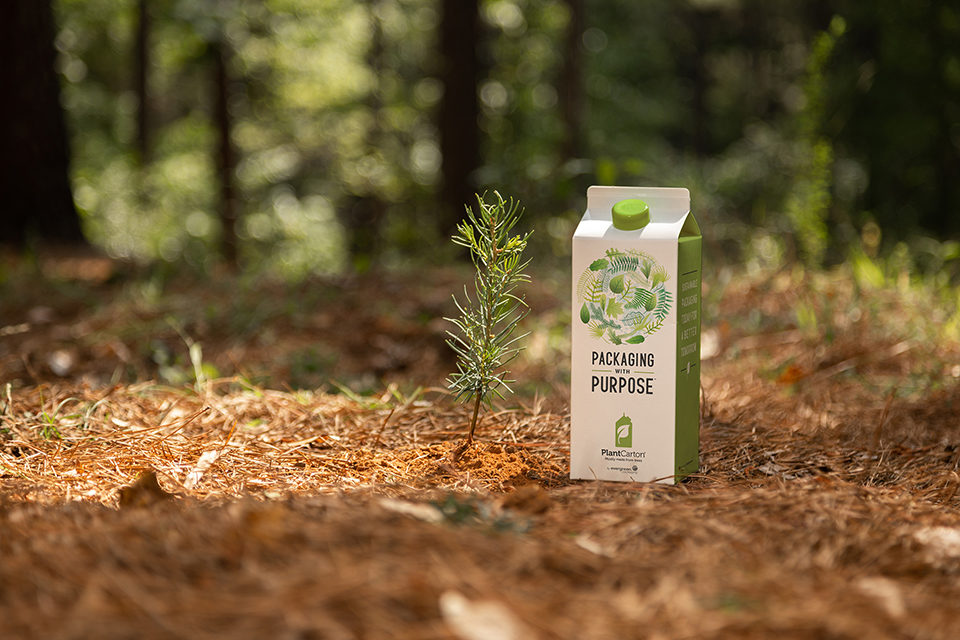KANSAS CITY, MO -- Packaging that helps protect fresh dairy beverages, demonstrates responsibility through sustainability, and offers unique brand-building benefits will stand out in the marketplace, according to Katie Simmons, marketing director with Pactiv Evergreen.
At the same time, Clint Rush, marketing director with Indianapolis-based Closure Systems International, said plastic pollution, mechanical and chemical recycling, sustainable packaging designs, tethering, and consumer sustainability expectations have all impacted innovations within the caps and closures segment.
Highlighting their efforts in sustainability, Pactiv Evergreen has introduced PlantCarton, a packaging solution made with 70% paper. The paper is a renewable resource, and these cartons are even developed from trees grown in forests with responsible forestry practices where the overall growth exceeds removal and environmental impacts are minimized.
“PlantCarton packaging helps protect beverages during transport and extends shelf-life in the store and in consumer homes,” Simmons said. “Special oxygen and moisture barriers in cartons further help to preserve the nutrition and taste of beverages so the packaging not only helps protect against food waste at every step, but also helps ensure the quality of the beverages consumers purchase.”
Additionally, about 55% of the energy used to make the paper in PlantCarton packaging comes from biomass, which is a renewable energy source. The company also supports responsible forest management practices, Simmons said.
Simmons said they ensure their customers have a high level of supply chain assurance by holding certifications from three international organizations, the Programme for the Endorsement of Forest Certification, the Forest Stewardship Council, and the Sustainable Forestry Initiative. To maintain these certifications, they follow strict program standards and undergo annual audits.
“We are committed to promoting responsibility forestry and work with landowners to increase certified forests,” Simmons said.
Additionally, reducing food waste is also an important feature of packaging as the Food and Drug Administration estimates food waste at between 30 and 40% of the food supply. Simmons said PlantCarton packaging helps reduce food waste by protecting beverages during transport as well as by extending shelf-life in the store and at home. Special oxygen and moisture barriers in the cartons help further preserve nutrition and taste.
The millennial effect
Simmons emphasized the effect millennials have on the marketplace, and Pactiv Evergreen has identified five ways in which millennials are impacting sustainable packaging. They have summarized the key beliefs from this age group as “a healthier planet means a healthier me,” “healthier foods and beverages are even healthier in sustainable packaging,” “food and beverages need to come in packaging that supports sustainable practices,” “brand owners will build trust by acting responsibly toward the environment,” and “it is worth paying for more eco-friendly products.”
Pactiv Evergreen has supported these ideas with consumer research showing 80% of millennials agree that living eco-friendly boosts quality of life, and 69% of these consumers are influenced to purchase based on a company’s decision to use plant-based packaging.
The market for such packaging is growing, and according to NielsenIQ data, beverages, milk products, and dairy/milk alternatives in refrigerated paper packaging increased in units for both the 52 weeks ending Aug. 14, 2021 and Aug. 15, 2020 in the US market.
Practicing sustainability is just as much of a consideration with caps and closures as it is with primary packaging. Rush said CSI is constantly evaluating the sustainability of its closure portfolio and identifying new innovations that can contribute to the development of a circular plastic economy. He said two critical components of making a circular plastic economy a reality include incorporating post-consumer recycled content into food grade applications and ensuring recyclability.
PolyCycle is CSI’s FDA-approved post-consumer recycled content for the food and beverage industry, and the company’s proprietary enhancement process reduces the residual contaminates that are found in all resins to produce the highest quality possible post-consumer recycled content, Rush said. This material is made from 100% recycled food and beverage packaging, including high density polyethylene and polypropylene. Depending on the application, PolyCycle can incorporate up to 100% post-consumer recycled content.
Caps and closures
Rush also said the caps and closures market is not only influenced by consumer trends, but also by the needs of bottlers and brand owners. Overall, Rush said the company has six overarching trend categories against which most of their innovation initiatives are aligned to satisfy consumers, bottlers, and brand owners. These trends include wellness, consumer convenience and functionality, brand promotion and decoration, product integrity and preservation, cost reduction, and environmental stewardship.
For Ontario-based Stanpac, promoting sustainable packaging has come through their offerings in glass containers. While fluid milk in a glass container still represents a very small percentage of overall fluid milk packaging, it is rapidly growing as a part of Stanpac’s business, according to Murray Bain, vice-president of marketing. He said they have seen this segment of their business grow about 8-10% each year for the last few years, and they have been adding equipment to keep up with the increased demand. He said they have seen customers expanding home-delivery options significantly during the last several years, and while some pandemic-driven home-delivery business has subsided, much of it remains in place.
Stanpac’s latest glass bottle solutions include smaller-size refillable bottles ranging in size from 12- to 16-ounces. These options also have a threaded neck for on-the-go consumers. He said glass containers have the added benefit of not impacting the overall taste of the product, and consumers often comment that milk simply tastes better in a glass as a result.
Overall, packaging for dairy beverages has the potential to tell stories and build connections with consumers.
“Today’s consumers are smart and have many beverage choices,” Rush said. “Therefore, it is critical their beverages taste fresh, authentic and consistently live up to expectation. Packaging and closure solutions must protect the integrity of consumers’ brands.”

